Quartz - Mineral Overview of Properties, Varietes and Occurence
Quartz is an incredibly common mineral that can manifest itself in all kinds of environments. It forms a very beautiful crystals, and it is highly versatile, as it comes in many different colors that go by several names.
Usually, quartz can be found as a mineral component in sandpaper, cement, and glass; however, it is also used in ceramics, jewelry, watches and clocks, optics and sometimes in countertops, and other home decor.
Structure of Quartz
Scientifically speaking, quartz is known as silicon dioxide, or simply silica. This is because it is created by a framework of repeating SiO4 tetrahedra molecules. Two of these molecules share oxygen in a three-dimensional pattern, thus creating the chemical compound SiO2, or silicon dioxide.
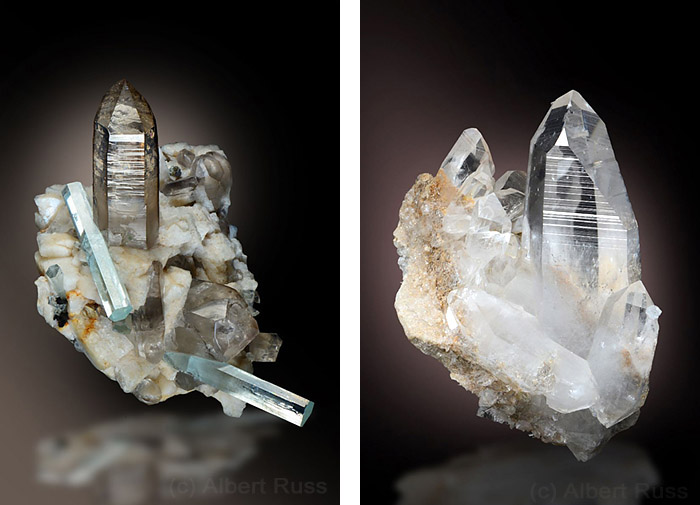
Because of this unique chemical makeup, quartz can be classified as a trigonal crystal. This simply means that it forms as a six-sided prism that terminates in pyramid shapes on either end - a traditional crystal shape of sorts. This is generally the shape attained by laboratory created quartz, but naturally forming quartz tends to form as twins or interconnected with another type of mineral. Crypto-crystalline form of silica is known as chalcedony and amorphous (non-crystalline) silica is opal.
When quartz sits at room temperature, it is known as alpha-quartz, or lower quartz. This is usually the label given to trigonal quartz. During a process called inversion, however, it is heated to 573 degrees Celsius (1063 degrees Fahrenheit) and transforms into hexagonal quartz, which is also called beta-quartz or upper quartz. At this point, quartz expands by 0.45% and thus changes its original form. When cooled once again, it can crack or otherwise become damaged because of volume contraction. This process can occur naturally in igneous rock. Over millions of years, it can recrystallize into alpha-quartz while still retaining the shape of beta-quartz.
Physical Properties of Quartz
Quartz can manifest itself in many different colors. Varieties of quartz include colorless (clear), white, gray, purple, black, brown, green, yellow, orange, red, blue, or multicolored. It has a hardness of 7 and a hexagonal crystal system. The luster is vitreous, and the tenacity can be classified as brittle. There is no notable cleavage to a quartz crystal.
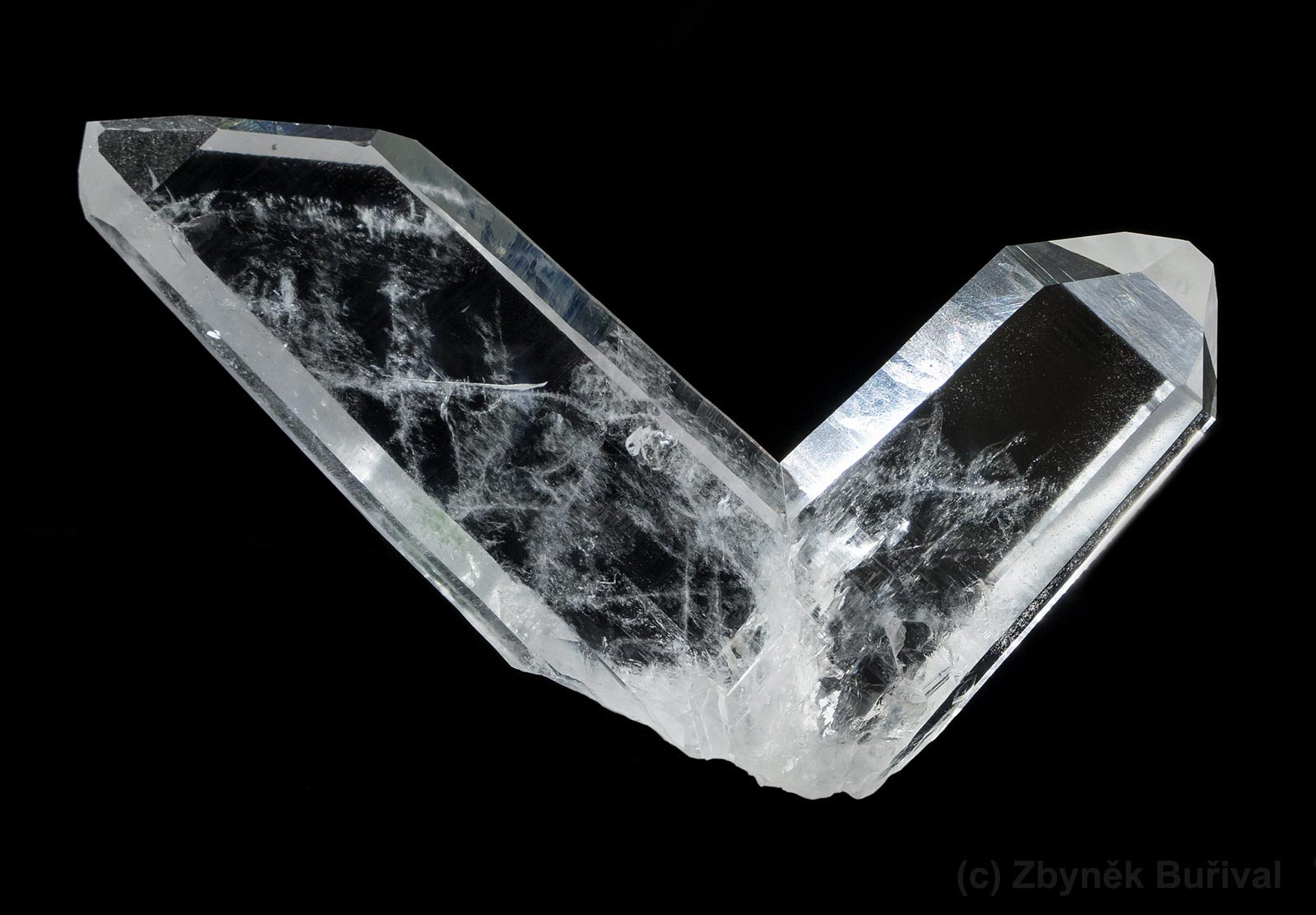
Quartz crystals are easily identifiable by their pyramidal terminations at both ends. They may also be identified by their frequent habit of twinning. In nature, quartz crystals are very often discovered as twins. One of the most common ways quartz crystals twin in nature is known as Japanese twinning. In this situation, two quartz crystals have grown together at an 84.5-degree angle from their bases. This formation resembles a traditional Valentine&s heart. When left and right oriented crystals grow together, however, they are referred to as Dauphine twins (alpine twins), or Brazil twins.
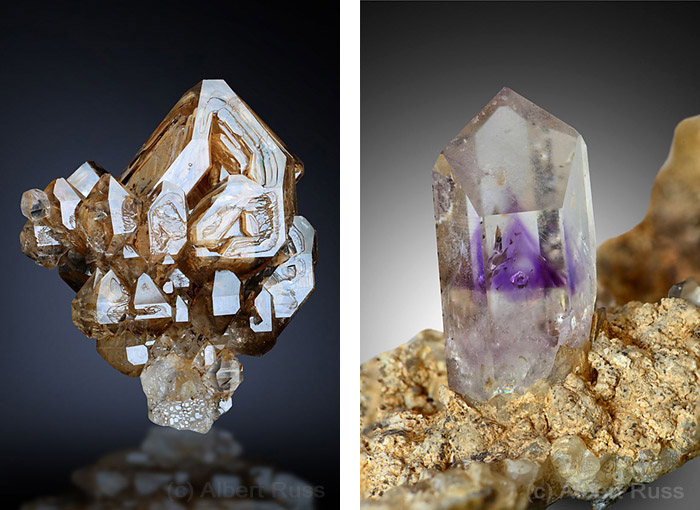
In many situations, quartz crystals form larger at the top than the base, creating a bulge at one end of the crystal. This is known as a scepter growth. Another common form of quartz growth is the phantom, or ghost, which refers to one crystal overtaking another and growing with the original crystal still inside. Less common, but known for its beauty, is the gwindel type of quartz growth. As a gwindel, quartz grows sideways along an A-axis to form what is known as a twisted quartz.
Occurrence
Quartz occurs when temperatures fall between 100 and 450 degrees Celsius. It requires hot water, otherwise known as a hydrothermal environment, to form effectively. This means that it is usually found in igneous and volcanic rock. However, there is more necessary to the formation of quartz crystal than simply a certain temperature. For example, in order for quartz to form and grow successfully, temperatures and pressures both must rise and then fall once again.
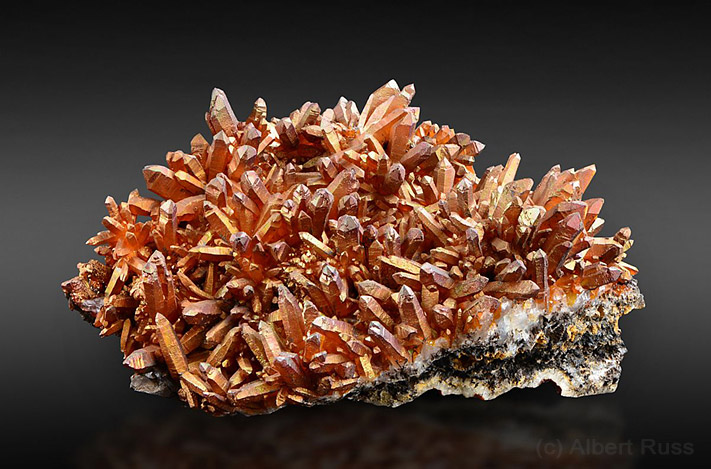
In some instances, hot water from rocks deep below the surface of the earth bubbles up and reaches surface-level rocks (usually when volcanic activity is present). The rocks at or near the earth&s surface can cool much more quickly than those deep below, and their fast cooling time causes silica to grow significantly. This creates quartz veins. Quartz can also often be found in hydrothermal ore vein systems.
Sometimes, quartz that is buried far below the earth suddenly reaches the earth&s surface. Usually this happens when earthquakes or other tectonic activity occur. When the quartz that was once far below the earth suddenly reaches near surface-level temperatures, and the pressure surrounding it drops, alpine quartz clefts are formed. This forms rock crystals with lovely shapes or clear smoky quartz, both of which are very beautiful and highly prized.
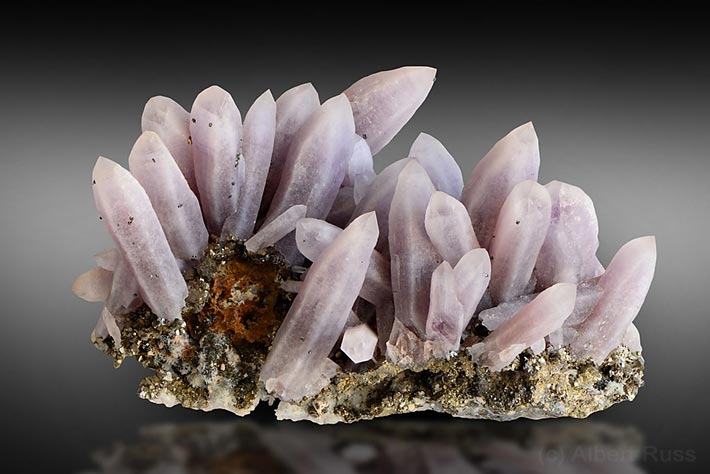
The truly nice quartz crystals can be found in pegmatites, which are a special kind of magmatic rocks. In the previous stages of this process, water has gathered many different chemicals but has not melted off in any way. As crystals continue to grow but water remains unmelted, pockets of mineralized water form throughout the magma. These pockets become overheated, causing their chemical ions to be extremely mobile. When this happens, crystals grow huge very rapidly - and this forms what is known as a pegmatite. Pegmatites are known not only for their large and beautiful crystal formations, but also for the presence of several rare types of minerals.
Chalcedony and Agate - cryptocrystalline forms of Quartz
Quartz comes in several different varieties. Although most of the types of quartz in existence are simply differently colored than its original form (which is clear), there are two other commonly-occurring types of quartz that differ a bit more. The first of these is chalcedony.
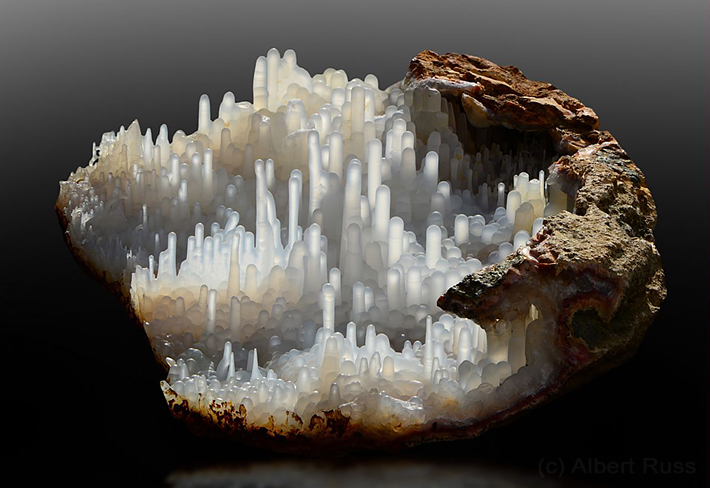
Chalcedony is considered a cryptocrystalline polymorph of quartz. Cryptocrystalline is a term that refers to the makeup of the rock&s texture. Basically, when a rock can be classified as cryptocrystalline, this means that its crystalline nature is only apparent when viewed under a microscope. To the naked eye, these rocks do not appear to be crystals at all. Chalcedony falls under this classification because it is made up of microscopic growths of both quartz and moganite which have grown together over time. In many cases, it can develop by internal recrystallization of amorphous opal.
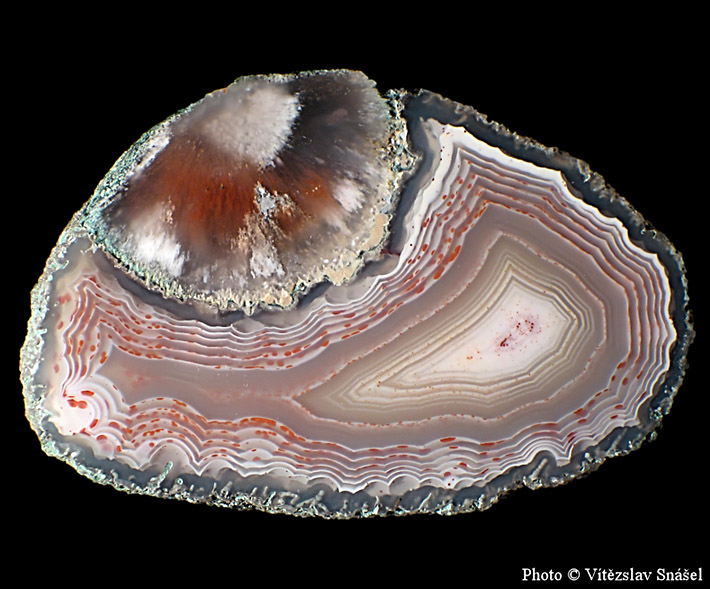
Agate is in fact a rock (because it is a mix of minerals) with a similar composition. It is mixture of quartz and cryptocrystalline polymorphs of silica; it is formed by the layering of simple quartz with chalcedony and oftentimes opal as well. When water containing silica (SiO2) travels through heated volcanic rock, it crystallizes into chalcedony deposits. If the silica solution in the water changes in some way, layers of quartz are formed on top of the chalcedony. This process can repeat itself many times to create agate.
Because just chalcedony and agate form great amount of sub-varietes, they are described in depth in separate chalcedony and agate articles.
Common Milky Quartz
Milky quartz refers to cloudy, white quartz crystals. This forms when fluid inclusions are encased in the clear quartz in the early stages of crystal formation. Many collectors consider milky quartz worthless or even "ruined". However, it is commonly used for carvings and sometimes in jewelry, because it has a slightly different luster from other varieties of quartz. In hydrothermal veins, mass quantities of milky quartz generally signify the presence of gold nearby.
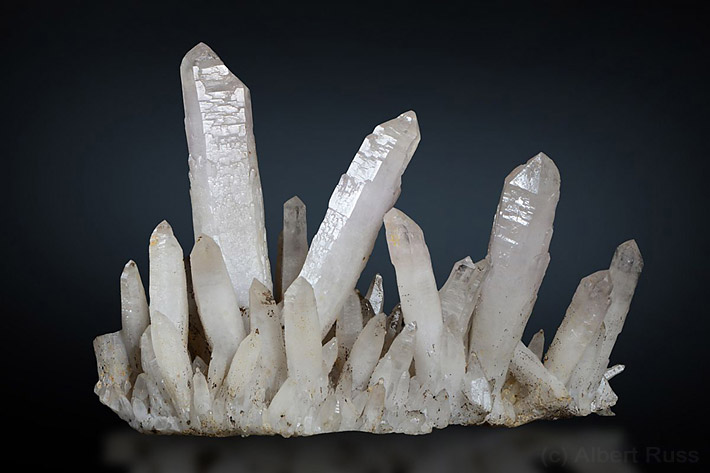
When a piece of quartz has a phantom inclusion, milky quartz is usually the culprit. It can be found most anywhere, but notable specimens have been located in Germany, Italy, Norway, and Portugal.
Rock Crystal
Rock crystal, or clear (colorless) quartz crystal, is very common in any situation where quartz can grow well. Beautiful specimens of rock crystal, however, occur when geological changes occur very slowly over a great deal of time. This is why Alpine rock crystal is so valuable and lovely; it has been forming for millions of years. Rock crystal must be completely clear and free from inclusions, phantoms, or coloration.

This variety of quartz is vastly important to the alpine culture, and quartz mined from the Alps has been a major source of income for this area for centuries. However, it is mined commercially from Arkansas and New York, Brazil, and Russia. Brazil is the current leader in rock crystal export, and the Coleman Mine in Arkansas also provides a significant portion of the world's commercial rock crystal.
Smoky Quartz
Originally, smoky quartz was referred to as smoky topaz, but this is not common practice any longer. This variety of quartz forms when aluminum is present in rock crystal, and that crystal becomes irradiated with x-rays or gamma rays. The color begins to fade in sunlight or when heated over 200 degrees Celsius. While smoky quartz can be naturally created, it is most commonly irradiated artificially. When smoky quartz is very dark or even black, it is most likely artificially colored. However, black smoky quartz does exist very rarely in nature, and is referred to as morion.

The most well-known location of smoky quartz that occurs naturally is Arkansas. It can also be found in Colorado, Austria, Switzerland, Russia, China, Germany, Greece, and Italy.
Rose Quartz
Rose quartz is one of the most sought-after varieties of quartz available. It is not the same as pink quartz, which is light sensitive and develops crystals. Rose quartz is not light sensitive and it does not form crystals, despite the fact that it is not a cryptocrystalline morph. It is never transparent at all.
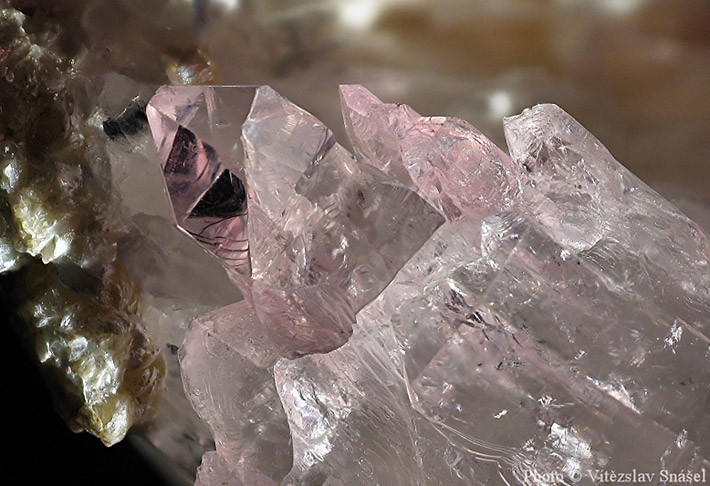
The formation of rose quartz is highly debated, and no one knows for certain how it is created. Many believe that titanium oxide inclusions are responsible for the pretty pink coloration of this variety of quartz. However, it has also been suggested that radiation causes the coloring, just as it does in smoky quartz and amethyst. Still others believe that dumortierite inclusions cause the pink color to show. The true cause of the rose color in rose quartz is still being studied today.
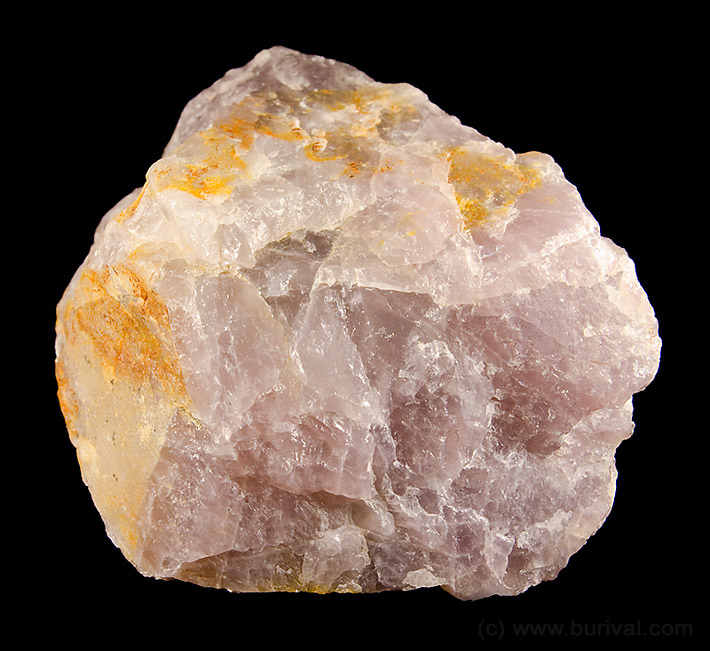
Rose quartz forms in pegmatites at high temperatures - so high, in fact, that it sometimes becomes a beta-quartz. It is most commonly commercially mined from locations in South Dakota, South Africa, Brazil, and Madagascar.
Amethyst
Quite possibly the most well-known and appreciated form of quartz, amethyst is used very frequently in jewelry. It occurs in a variety of shades of purple, from pale pink to dark violet.
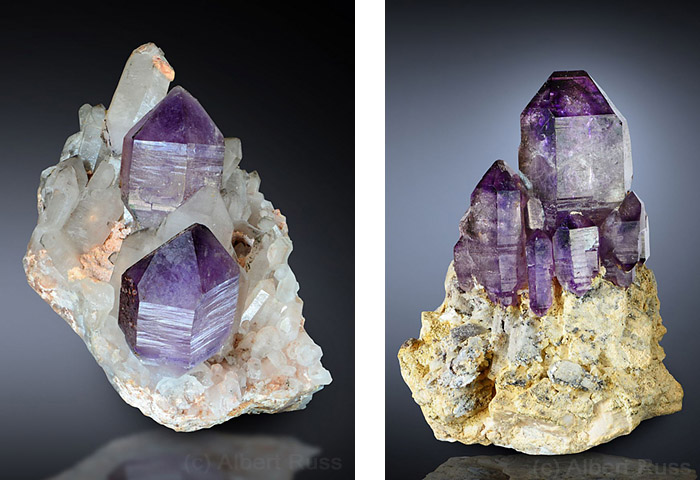
These colors occur in amethyst when a rock crystal contains traces of iron and is exposed to high energy radiation from x-rays or gamma rays. Exposing the amethyst to ultraviolet radiation causes it to loose color.
Amethyst occurs in short-prismatic form (with no prism faces) in volcanic locations, while it creates scepters in areas such as the Alps or in hydrothermal veins. In most instances, amethyst grows together as a polysynthetical twin, which means that the crystals form a sort of layering.

Amethyst is most famously mined from Brazil, Uruguay, Namibia, Mexico, Canada, Pakistan, and Madagascar.
Citrine
Citrine is almost never found in a completely natural state. It is incredibly rare, and the color of a natural specimen of citrine will never be the bold and unique shade achieved by artificial coloration. Most citrine available on the market today is actually amethyst that has been heat treated.
Citrine comes in a transparent yellow color that appears much more orange in an artificial state. Naturally, citrine is formed when aluminum or iron are present in the makeup of the crystal. Artificially, citrine is faked from amethyst of any shade and level of color. It is heated until it turns from its original purple shade to a deep brownish-orange color fading into yellow.

Naturally-occurring high quality citrine can be found in Brazil, Madagascar, and Russia. Peterson Mountain in the United States sometimes produces pale smoky quartz, but this is not the same as citrine.
Prasem
Prasem, otherwise referred to as prase, is a light or dark green type of quartz with a dull luster. It is not a very common form of quartz, and this terminology has not been used for very long. Green quartz labeled as prasem should not be confused with green chalcedony, which is referred to as plasma.
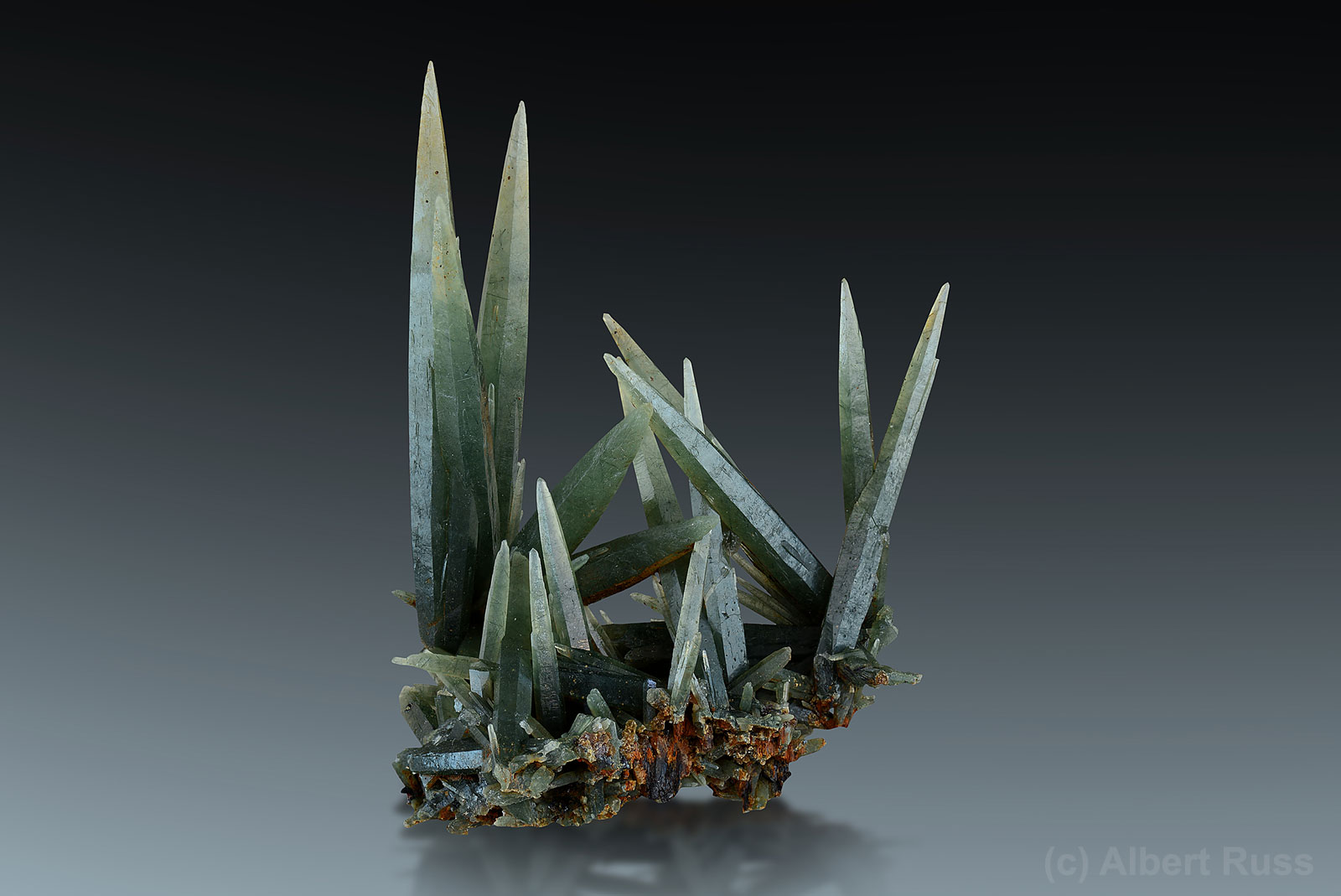
The green coloration of prasem can be attributed to the inclusion of actinolite or ferroactinolite in the rock crystal. Although chlorite inclusions can cause quartz to turn green, they do not classify a crystal as prasem. Prasem is usually found in skarns, which are rocks formed of magma and carbonate rocks; it is commonly accompanied by hematite and garnet.
The most famous locations where prasem has been found are Elba, Italy, and Serifos, Greece. It can also be found in Russia and Morocco, but much less commonly. Prasem is a very rare quartz variety.
Rutilated Quartz
In environments such as Alpine clefts, small golden or yellow needle shapes can be found inside quartz crystals. These are needle-shaped rutile crystals - often labeled as a rutile variety sagenite. When clear rock crystals or smoky quartz contain rutile needles, they are referred to as rutilated quartz and can be highly prized by collectors.
Rutilated quartz is often found in Brazil and great specimens were also found in Ural Mts., Russia. But the most valuable specimens come from the Alps.
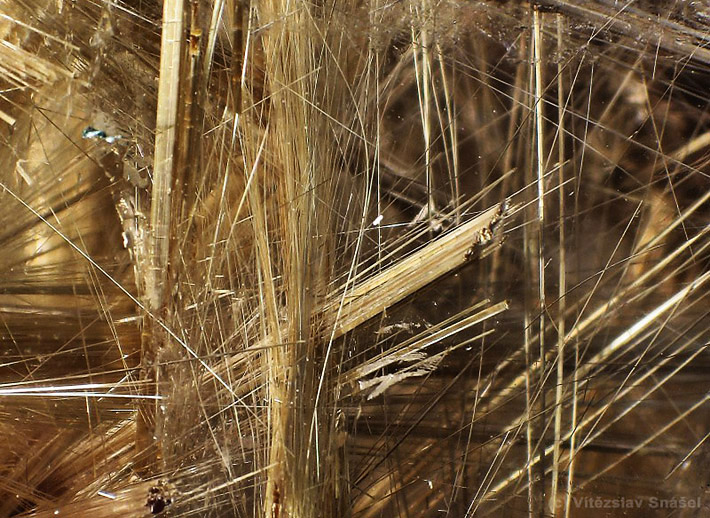





Comments
linda rogers said:
27.10.2014 23:16:57Awesome information..thankyou